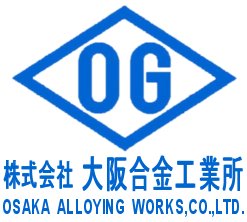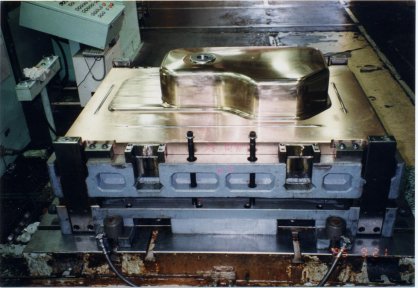|
Main applications of OM alloy
・ Forming roll (OM28F)
Forming roll for
polished steel sheet, stainless steel sheet, titanium sheet, zirconium sheet,
aluminum sheet and surface-treatment steel sheet.
・ Metal die (OM33F)
Metal die of
drawing process, bending process and other forming processes for kitchen
appliances, automobile, home appliances, low voltage-/high voltage electric
equipment parts, gas appliances, agricultural machinery parts, pressure vessel
and hardware for construction works
・ Parts
Mechanical parts, metal die
parts, etc.
|
Lubrication characteristics
|
The lubrication characteristics of OM alloy
are much better than those of ferrous mold materials and conventional
copper-base die materials. Since OM alloy has a smaller friction resistance
than ferrous mold materials, both the shock line width of drawn products and
the maximum punch load are small. OM alloy also has greater drawing
capabilities than ferrous mold materials so that a high drawing limit ratio is
applicable for both SUS304 and SPCD drawing.
As a result of investigations of the
applicability of 21 types of commercially available lubricants to OM alloy, it
has been found that all of the lubricants used conventionally with ferrous mold
materials can be employed directly.
|
Mold material characteristics
|
OM alloy provides all of the
characteristics required for press mould (die) materials such as excellent
lubrication and drawing properties, wear-resistance, and thermal conductivity
which brings you lowest production cost and highest productivity.
Excellent lubrication properties provide
steady oil films on die surfaces, and prevent such damages as burn-on and
scratches on product and die surfaces, and improve productivity supported by
higher drawability.
Low friction properties improve the limit
of deep drawing and reduce the number of drawing processes required. This also
results in low cost and high productivity.
High wear-resistance means less die repairing,
and assures less production process interruption and die maintenance costs, and
leads to the improvement of productivity.
Good thermal conductivity of dies prevents
temperature rise of blank absorbing deformation and friction heat of blank,
lowers the sectional heat gradient of the die, equalizes local die temperature
and keeps die surface temperature lower. This increases the lubrication effect
and improves drawability.
|



